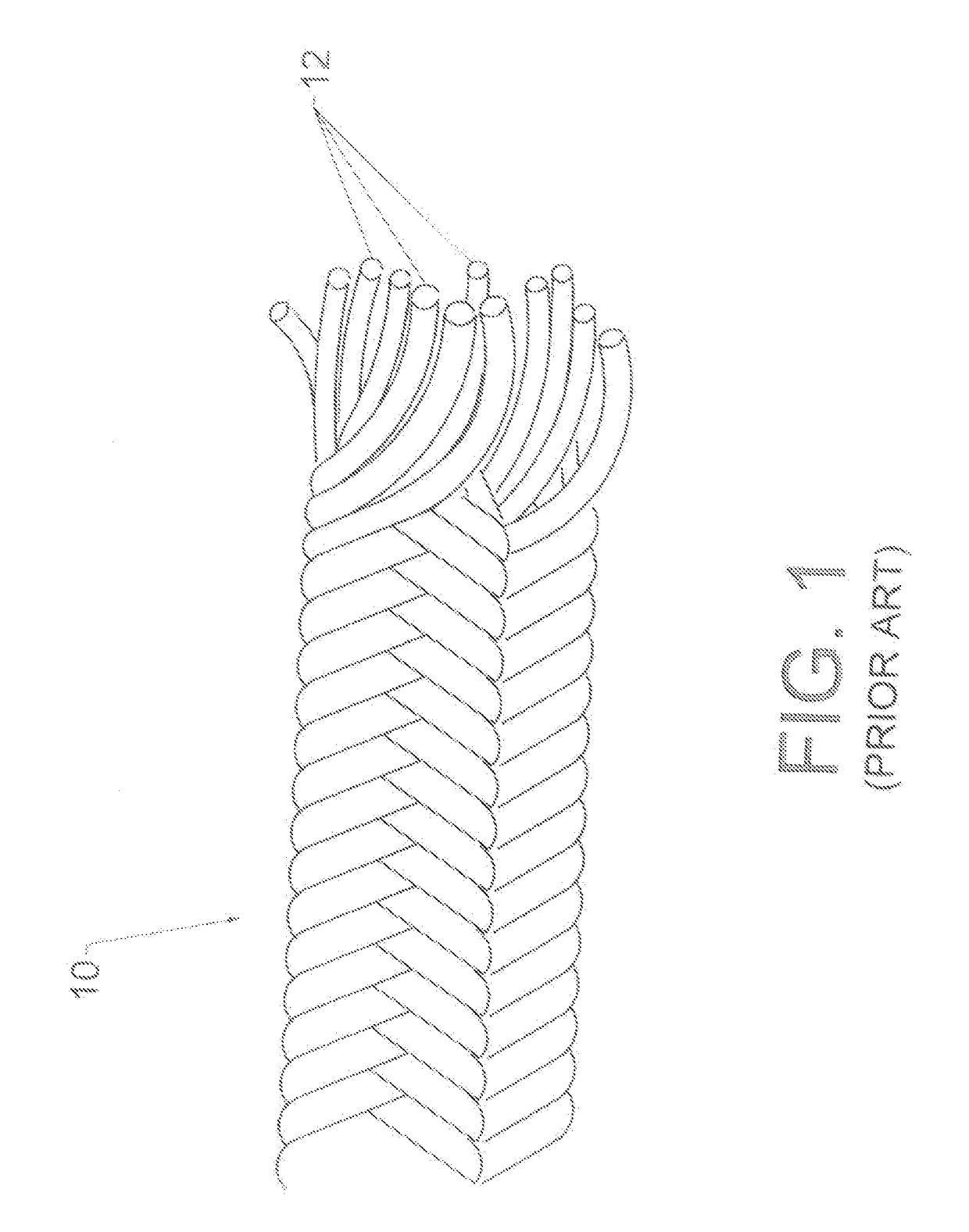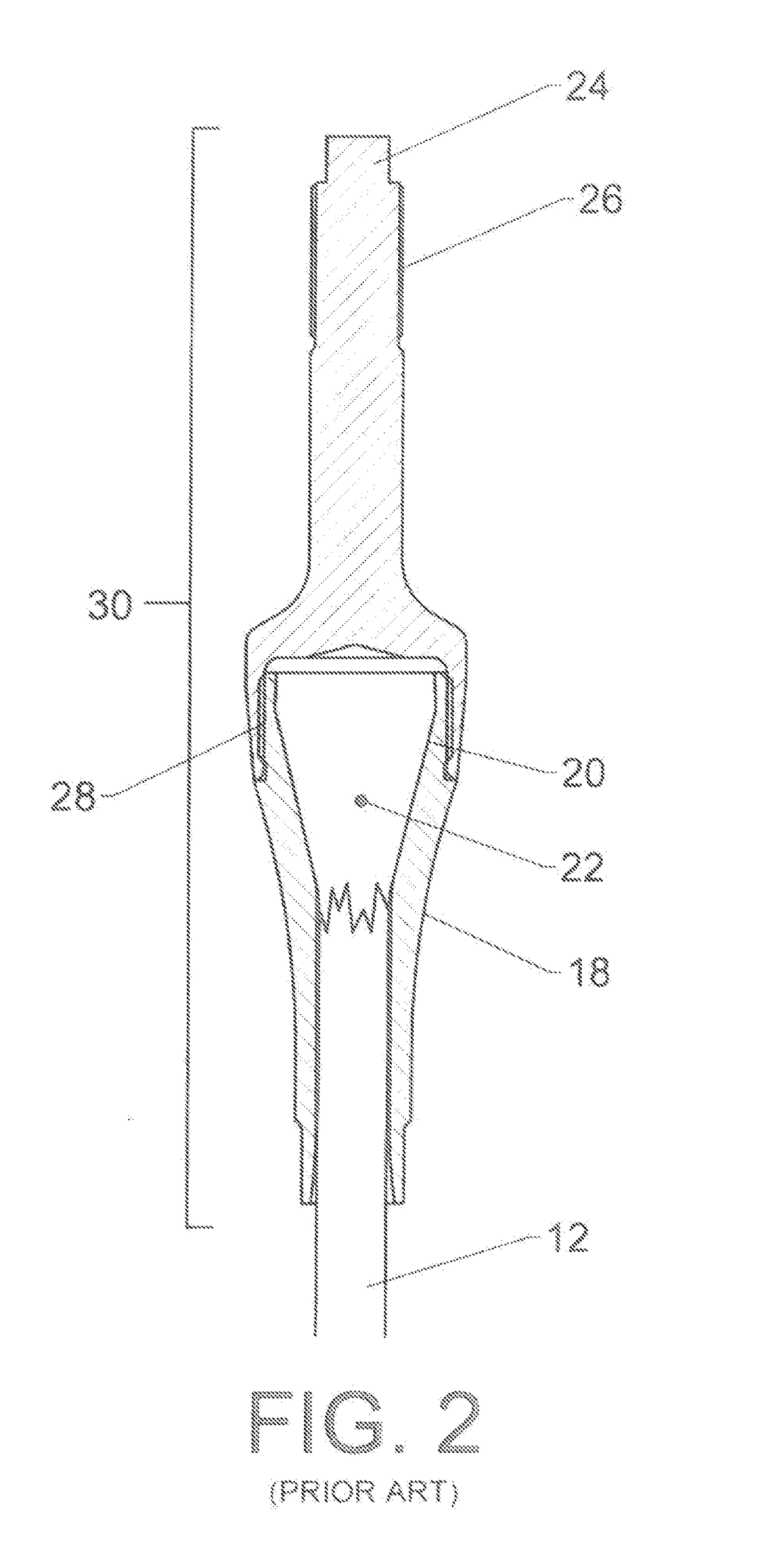Methods and Designs for Balancing a Stranded Termination Assembly
a technology of stranded termination and assembly, applied in the field of methods, can solve the problems of difficult organization, more complicated end fittings, and difficult handling of synthetic filaments
- Summary
- Abstract
- Description
- Claims
- Application Information
AI Technical Summary
Benefits of technology
Problems solved by technology
Method used
Image
Examples
Embodiment Construction
[0120]FIG. 4 shows an exemplary device used to gather all the strands into a unified whole and thereby create an overall cable termination. Collector 34 includes twelve receivers 38, each of which is configured to connect to a single strand termination (In other embodiments a receiver may be configured to connect to multiple strand terminations). Collector 34 typically includes some type of load-transferring feature designed to transfer a load from the collector to some external element. Loading flange 36 is a simple example of a load-transferring feature. The collector in this example is very simplistic and is unlikely to represent a design that would actually be used. However, it does serve well to clearly illustrate the inventive features.
[0121]FIG. 5 shows an exemplary connection between a termination on a strand and the collector. Loading stud 24 is passed through opening 46 and through receiver 38 in collector 34. Receiver 38 includes a hemispherical concave portion sized to a...
PUM
 Login to View More
Login to View More Abstract
Description
Claims
Application Information
 Login to View More
Login to View More - R&D
- Intellectual Property
- Life Sciences
- Materials
- Tech Scout
- Unparalleled Data Quality
- Higher Quality Content
- 60% Fewer Hallucinations
Browse by: Latest US Patents, China's latest patents, Technical Efficacy Thesaurus, Application Domain, Technology Topic, Popular Technical Reports.
© 2025 PatSnap. All rights reserved.Legal|Privacy policy|Modern Slavery Act Transparency Statement|Sitemap|About US| Contact US: help@patsnap.com



